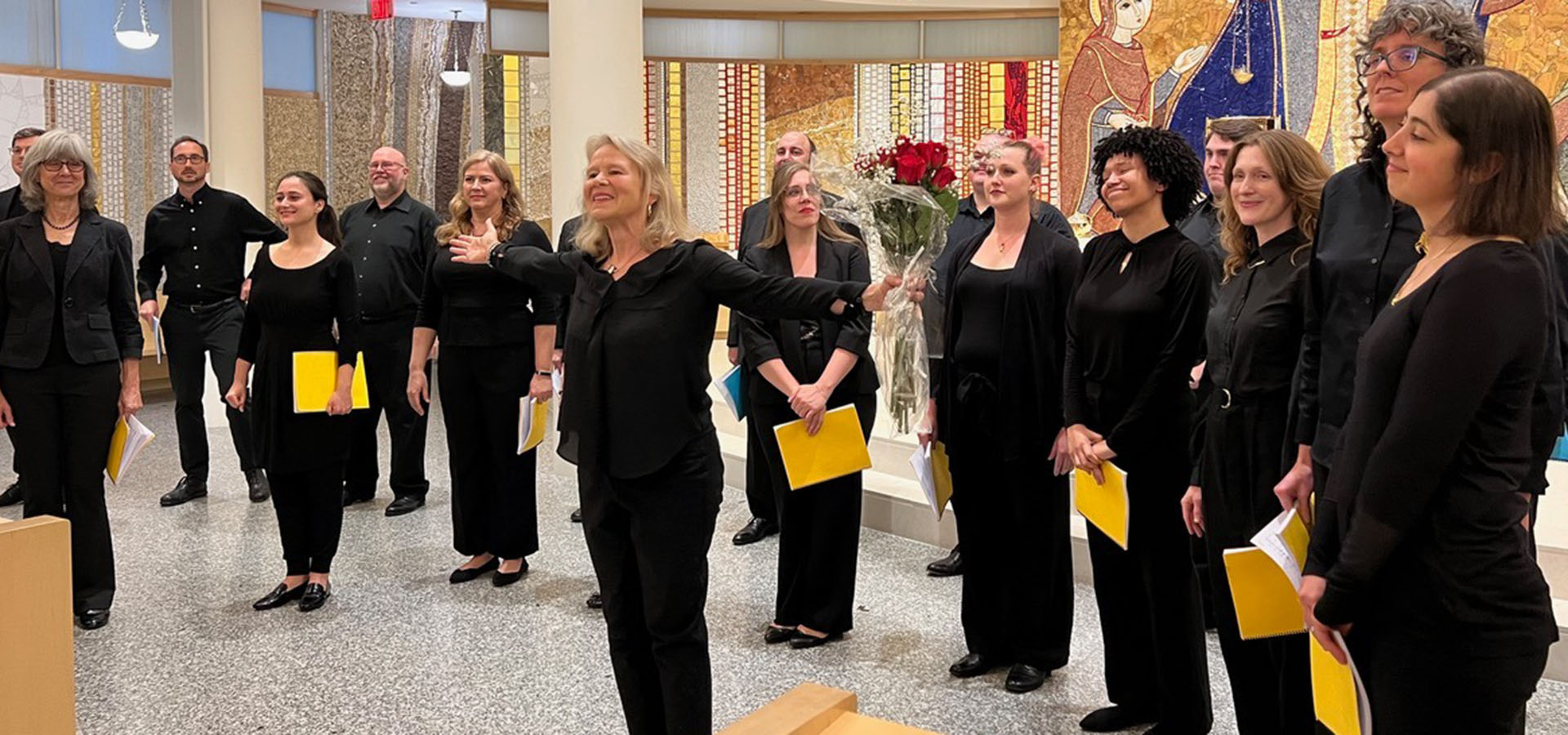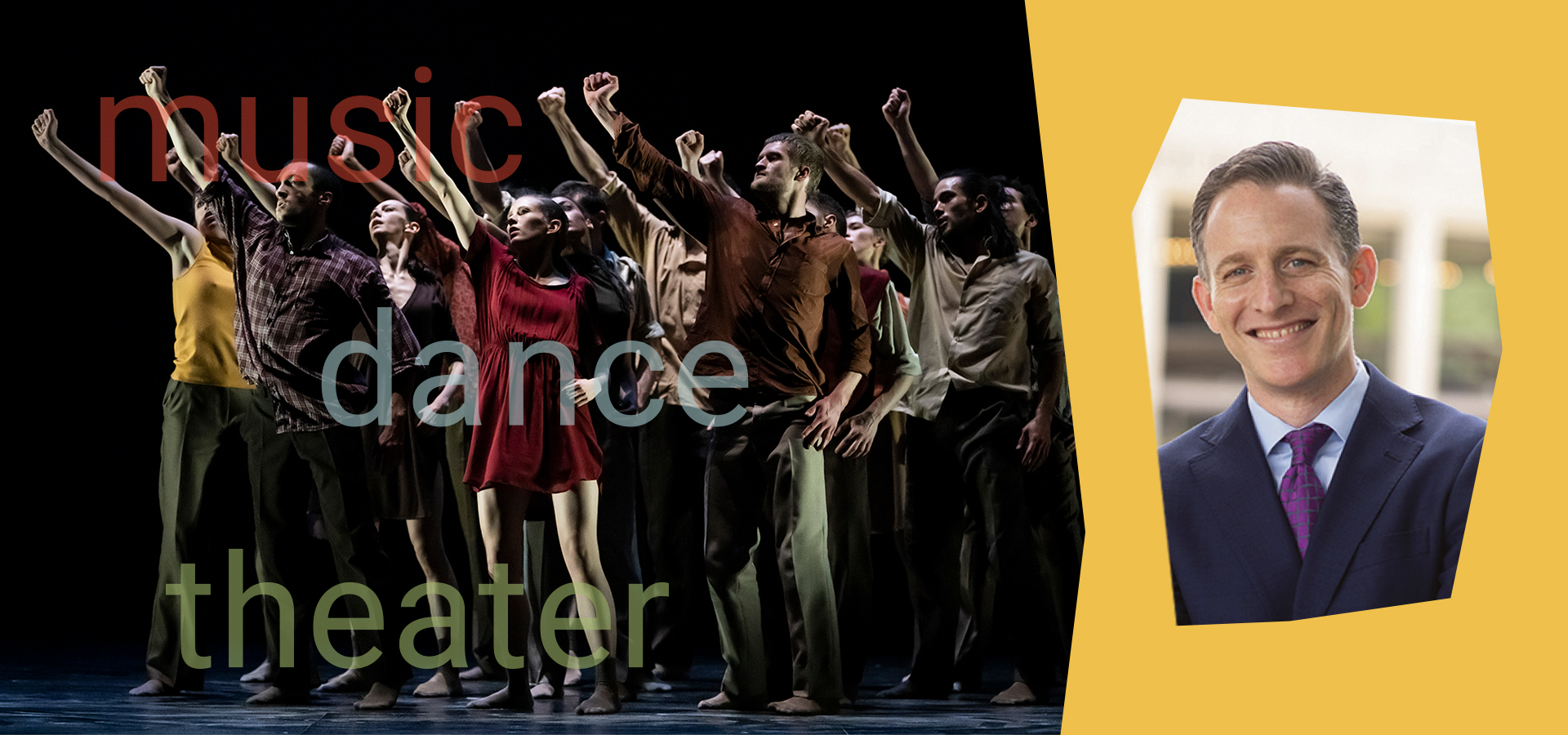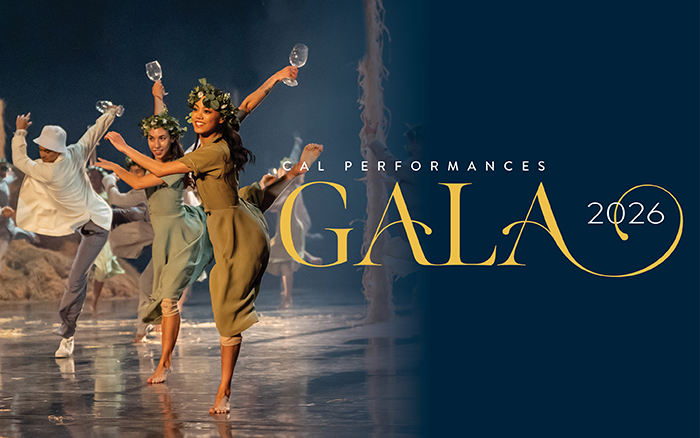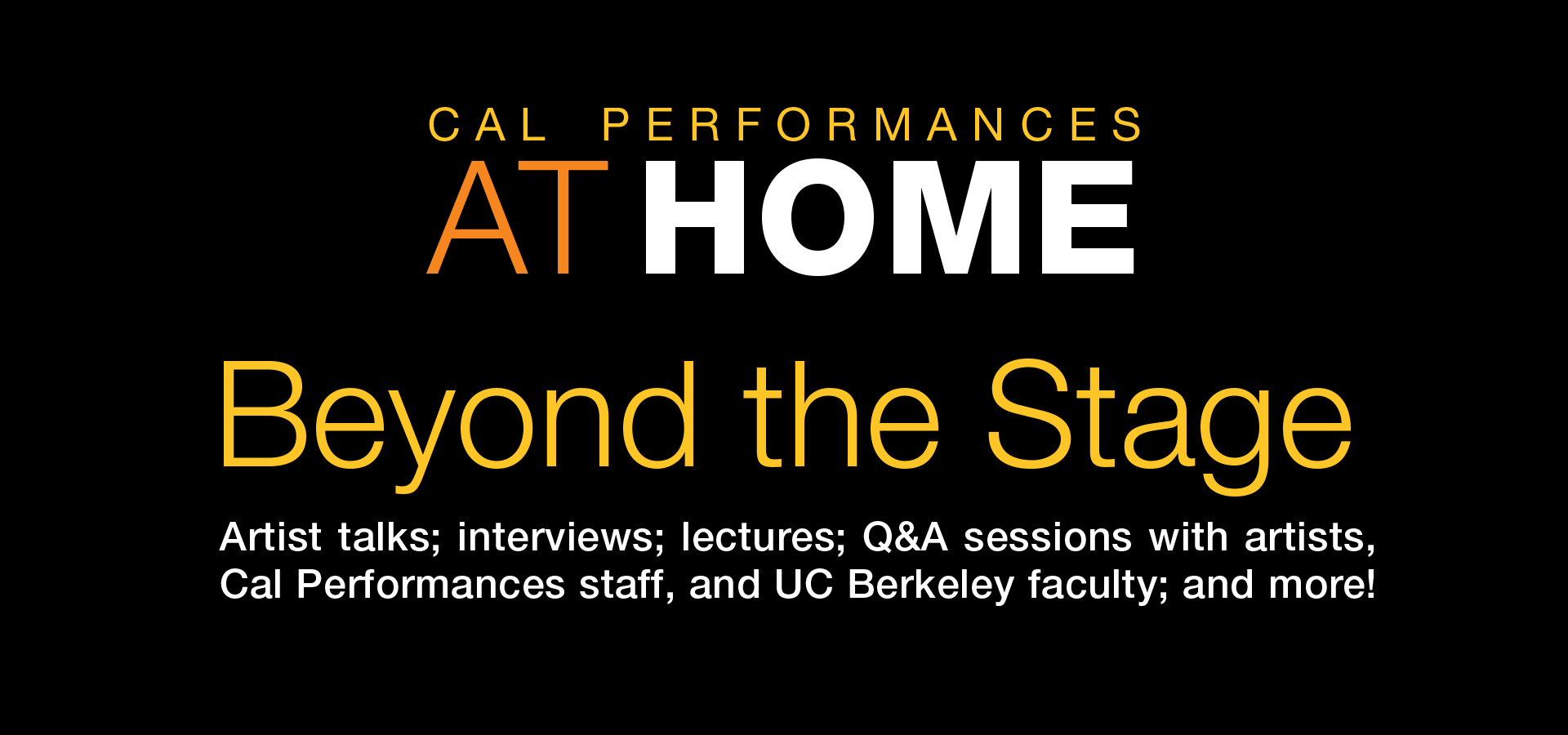
Cal Performances at Home is much more than a series of great streamed performances. Fascinating behind-the-scenes artist interviews. Informative and entertaining public forums. The Cal Performances Reading Room, featuring books with interesting connections to our Fall 2020 programs. For all this and much more, keep checking this page for frequent updates and to journey far, far Beyond the Stage!
Major support for Beyond the Stage is provided by Bank of America.
Beyond the Stage
Illuminations Artists and UC Berkeley Professors Discuss Individual Liberties and Community Needs

Illuminations Artists and UC Berkeley Professors Discuss Individual Liberties and Community Needs
How do we reckon with the tension between individual liberties and community needs?
Produced and directed by Mina Girgis, Cal Performances’ Director of Education, Campus and Community Engagement; Directed and edited by Lindsay Gauthier. Full credits below.
In this video, Illuminations artists and distinguished UC Berkeley faculty explore the longstanding and complex tension between individual liberties and community needs. On one hand, individual liberties are important for protecting individual autonomy and ensuring that people have the freedom to pursue their own goals and values. On the other hand, community needs are also important for promoting the common good and ensuring that society as a whole functions smoothly and fairly.
In many cases, individual liberties and community needs can be balanced through thoughtful and careful decision-making. However, there are also situations where individual liberties and community needs may come into conflict, such as in cases of public health emergencies or national security concerns. In such cases, difficult choices may need to be made to balance competing interests and priorities. In this video, artists and UC Berkeley scholars discuss the key to creating policies and practices that promote the well-being of all members of society while also respecting individual rights and freedoms.
Topics include:
- 0:00 – Intro
- 0:14 – Individual Liberties & Community Needs
- 1:55 – Free Speech
- 6:36 – Tradition & Values
- 8:46 – Liberty & Equality
- 12:29 – Spirituality & the Science of Awe
This video features Dacher Keltner, PhD, Professor of Psychology and Faculty Director of the Greater Good Science Center; Charles Hirschkind, PhD, Professor of Anthropology and Middle Eastern Studies; Magdelys Savigne and Elizabeth Rodriguez of OKAN; Juana María Rodríguez, PhD, Professor of Ethnic Studies; Erwin Chemerinsky, JD, Distinguished Professor of Law and Dean of Berkeley Law; Taylor Mac, writer and co-director of Bark of Millions; and Mame Diarra Speis, Artistic Director of Urban Bush Women, and Courtney J. Cook, Associate Artistic Director of Urban Bush Women.
Learn more about Illuminations: “Individual & Community.”
Additional Credits:
- Directors of Photography: Heath Orchard, Avery Hudson, Ethan Indorf
- 1st Assistant, Cameras: Jared Tabayoyon, Aja Pilapil
- Special thanks to the UC Berkeley Library for hosting faculty video interviews.
Transcript
Dacher Keltner:
One thing we do know is music has very clear effects on the body. It opens your body up, activates the vagus nerve. It makes you feel open to the world rather than closed. It synchronizes us. It turns us into a collective.
Charles Hirschkind:
Community is a term that makes anthropologists quite nervous, particularly for the way in which it occludes the kind of operations of power by which collectivities are created and formed.
Magdelys Savigne:
Women were hidden and it was dangerous for us. In Santiago, it was very dangerous to be called a lesbian.
Juana María Rodríguez:
People want to feel a part of something. The nuclear family is not enough. We need bigger, more expansive structures.
Erwin Chemerinsky:
The relationship between individual and community is always a very complex one. There’s often a tension between wanting to protect the freedom of the individual and what’s best for the community.
Taylor Mac:
It all comes from a concept that my drag mother gave me, which is like, if you’re not having fun at the party, go make another party.
Mame Diarra Speis:
So essentially what we were doing was breaking the fourth wall with the audience and saying, “Hey, you are a part of this as well. If I’m examining and if I’m unpacking, then let’s ask these questions of you.” Because at the end of the day, we’re trying to lift up everyone’s humanity.
Free Speech
Elizabeth Rodriguez:
People are just literally taking to the streets. They are tired of 62 years of a dictatorship that has lasted way too long. People are hungry. People are dying. People got tired, finally, and woke up. We are supporting them from all over the world. Cubans in New York, Cubans in Miami, Cubans all over the world are supporting them because the government actually cut off internet for a few hours. So we didn’t know what was happening.
So we had to let the world know that Cuba was on the streets. And that’s what we’re doing here. We cannot go to Cuba right now, but we’re here supporting our people, and supporting them and saying that this is enough and the time has come.
We are very open in our career about what the real situation in Cuba is. My name is Elizabeth Rodriguez and I am a violinist and a singer.
Magdelys Savigne:
I’m Magdelys Savigne, percussionist and composer. We have a band called OKAN. It means “heart” in our Afro-Cuban dialect.
Elizabeth Rodriguez:
It has always been a mission of mine to tell people around me that don’t know much about Cuba, about my country, what really goes on there. It’s not always been well received, but at least in my band, I finally was able to have my own voice, so I can tell the truth, and the real story behind the Cuban lives.
Erwin Chemerinsky:
In November of 2019, Ann Coulter came to speak on the Berkeley campus. Some who went to hear her were assaulted. They were punched and shoved, water was thrown at them, they were spit at. I remember then issuing a statement within the law school, saying that all ideas and views can be expressed on campus. If you don’t like a speaker, a peaceful protest is appropriate. If you don’t like a speaker, invite your own speaker.
But it’s inappropriate to punch, or shove, spit at those who are going to hear a speaker. I got substantial pushback from some of the students. They posted on every bulletin board in the law school, “Dean Chemerinsky stands up for Ann Coulter but not for the students.” And yet I think that they missed an important point. If we’re going to be a campus, views have to be able to be expressed that we dislike as well as we like.
The only way your speech or my speech will be secure tomorrow is to protect the expression of views that we don’t like today. We don’t need the first amendment to protect what we want to hear. That would occur anyway. We need the first amendment to protect the speech we don’t want to hear.
And there’s always going to be a tension between wanting to be open and allowing speech, and the reality that speech can be destructive and harmful to students as well.
Juana María Rodríguez:
I think one of the things that the university can do is be an incubator for ideas. In my classrooms, we get to take an idea and push it until it falls apart. And so, very often, those are the places where we think about the tensions between individual and community, where we think about what it means to negotiate different, sometimes conflicting needs live and in person, in a space.
We need to bring the ideas that maybe aren’t so great. We need to see them fail. We need to try on ideas and see where they take us. I think the idea of being intellectually curious about the world, reading promiscuously—I am an ethnic studies scholar, and I really take in information from all the disciplines. I love literature, art, performance, but I also think about sound, and texture, and the fabric arts, and textiles.
And I think each one of these things is a different way to see the world, to engage the world. And so I think the university becomes this wonderful place of exploration, that’s also where we are really exploring our own values, our own sense of what we hold dear, what we’re not willing to let go of.
Tradition & Values
Charles Hirschkind:
Tradition allows you to get at the way in which we depend on each other in creating conditions that uphold a valued form of life. Think about generosity, charity, modesty, humility, all of these very classic religious virtues. Those are ones that sustain relationships and create positive conditions of relationships by which people craft a valued and sustained form of life.
So by highlighting tradition, it focuses on the ongoing project of securing the interdependencies by which our lives are held together, and therefore by which our communities are created and sustained.
Courtney J. Cook:
We are opening the door for other folks to also see their experiences reflected, or find a connection in some way that ties everything together. So seeing the individual as a reflection of the community, and vice versa, the community as a whole, it also reflects on the individual, those things being connected.
We going to put in those truths from my ancestors. We going to do the hard work of understanding and undoing racism. And we going to fold in the sweet spirit of change.
Liberty & Equality
Elizabeth Rodriguez:
I didn’t have permission to even question it, because in Cuba, I wouldn’t even dare to—
Magdelys Savigne:
—Explore.
Elizabeth Rodriguez:
… to explore it, because it was so taboo. And people are—there’s so much shame around it.
Magdelys Savigne:
Yes, Cuba, it’s very open about sexuality, and talking about sex and everything.
Elizabeth Rodriguez:
Heterosexual.
Magdelys Savigne:
But straight. As long as it’s straight, you can talk all around about anything you want. But, gay? Forget it. And the only people growing up that I saw that were allowed to perform that sexuality were men.
Erwin Chemerinsky:
There’s always a tension between liberty and equality. Any law that prohibits discrimination limits the freedom of people to discriminate. But our society for decades has made the choice that it’s more important to stop discrimination than protect freedom to discriminate. This is the first time in history the Supreme Court has ever said there’s a first amendment right to discriminate in violation of anti-discrimination laws.
And it’s not just going to be for gay and lesbian individuals. If, for example, a web designer said, “I don’t want to design websites for interracial couples, or for Muslims who are getting married,” they would have the right to do it.
Mame Diarra Speis:
When we think about sex and gender, we think that these are individual things, that sex is something very private that we do within the context of our home. But, really, gender and sex are incredibly public things that have far-reaching public implications, whether it’s about how bathrooms are organized, how different locker room spaces, how athletics are organized, but also, how prisons are organized, how senior centers are organized. And these are all places where sex and gender become regulated. So I think sex is one of these places where we think about who we are as individuals and then that encounters the world. And the world doesn’t always see us the way we see ourselves.
Right now there’s so much anxiety, and really fear around questions of gender, and really attacks on the transgender population where people want to be seen as who they feel they are, and they’re encountering a community that wants to impose something else on them.
Spirituality & the Science of Awe
Dacher Keltner:
It’s so funny as a scientist to study awe, because we start with these definitions that do some injustice to the phenomenon, but then we study the thing based on the definition. And awe is the hardest thing to define of anything I’ve ever studied.
We surveyed 26 countries. Our approach to all was just to have them write: “When’s the last time you encountered a vast mystery?” We got these stories coming in from around the world. They started telling stories of music, and listening to choir in a candlelit cathedral in Europe, singing in a choir in another country, listening to an Indian raga, dancing to music, music in Brazil.
It was everywhere. And the structure of the story felt the same, which was like, “Wow, there’s something about this experience. I get goosebumps, I tear up, I feel connected to other people around me. I feel awe.” And then, as a psychologist, I’m always interested in, how? How does that work?
And we’re so far from really understanding how—you produce these sounds, they hit your ear, they go through your brain, and, next thing you know, you’re transported. The obvious idea that it took psychologists a while to get to is it synchronizes us, it turns us into a collective. You just like—we start moving together, there are studies showing our brain pattern start synchronizing. Next thing you know, the boundaries start to dissolve, and you’re like, “Man, we’re all part of this.”
Taylor Mac:
What we’re trying to do with this show is explore some kind of queer spirituality without heterosexuality dictating what that is—explore some kind of gender spirituality, queer spirituality, without any kind of cis or dominant culture leading us.
And that’s really what it is. It’s really just about hanging out together and wondering together. And we just do it all with music. So I think of it a little bit like a reverse conversion therapy, that the whole idea is that we’re supposed to just make everyone more queer than they were when they entered.
I don’t think we have to do too much to convince people that they’re queer, or to invite them into an experience that is queer, because they already are. So sometimes it feels to me that when people ask me, “How can I make this show universal?” that what they’re saying is, “You’re too odd for everyone. So please help us sell tickets to straight people.”
I make work for queer people. And if the straight people want to come, please do. We will make you queer by the end of the evening. And we don’t really even do it. You do it. You do all the work yourself. All we do is sing songs.
Dacher Keltner:
When I ask people, “Tell me a time when music told you about what life means,” there’ll be one person who’ll say, “Oh, I was at a Garth Brooks concert, and I just started weeping about my life.” And then another person will say, like, “God, I saw this piece of classical music and I thought about who I am.” And I feel like that’s one of the great mysteries that may never be solved, is how it helps us discover who we are.
Related Posts
There are no related posts yet. Check back soon!
Jeremy Geffen on the Unique Value of Recitals
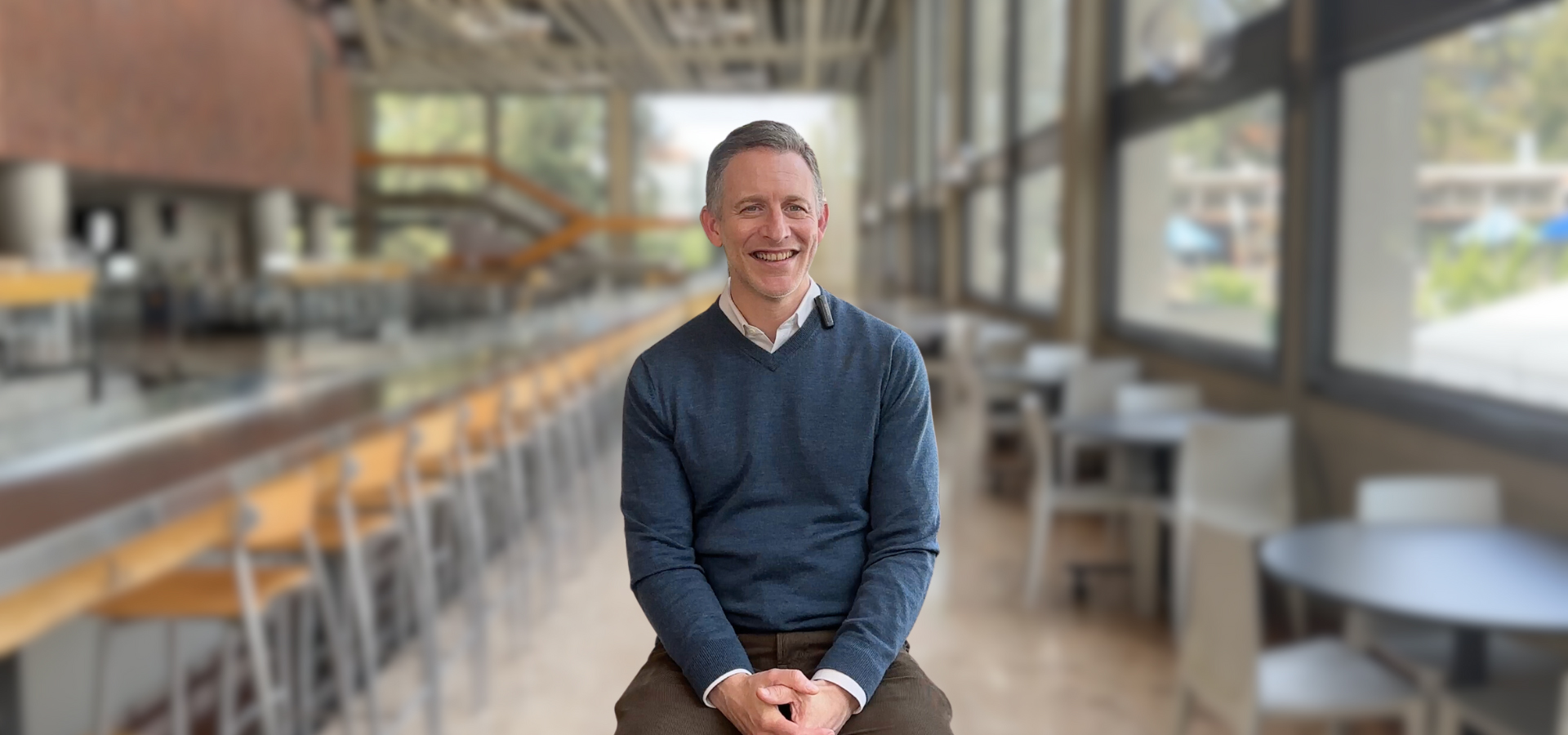
Jeremy Geffen on the Unique Value of Recitals
“It is because of that openness of concept that you get to something that is very, very personal for the artist.”
Video by Tiffany Valvo, Cal Performances’ Social Media and Digital Content Specialist
While we may be more drawn to visualizing an artist as the star of an opera or as a concerto soloist, there is something especially captivating about seeing them in recital. In this video, Cal Performances’ Executive and Artistic Director Jeremy Geffen explores the value of recitals, covering:
- 0:22 – How would you define a recital?
- 1:19 – What is different about seeing a performer as a recitalist as opposed to as part of a larger production?
- 2:49 – How do a presenter like Cal Performances and an artist come together to create a recital experience?
- 3:58 – What draws you personally to recitals?
Related Posts
Julius Eastman’s Femenine
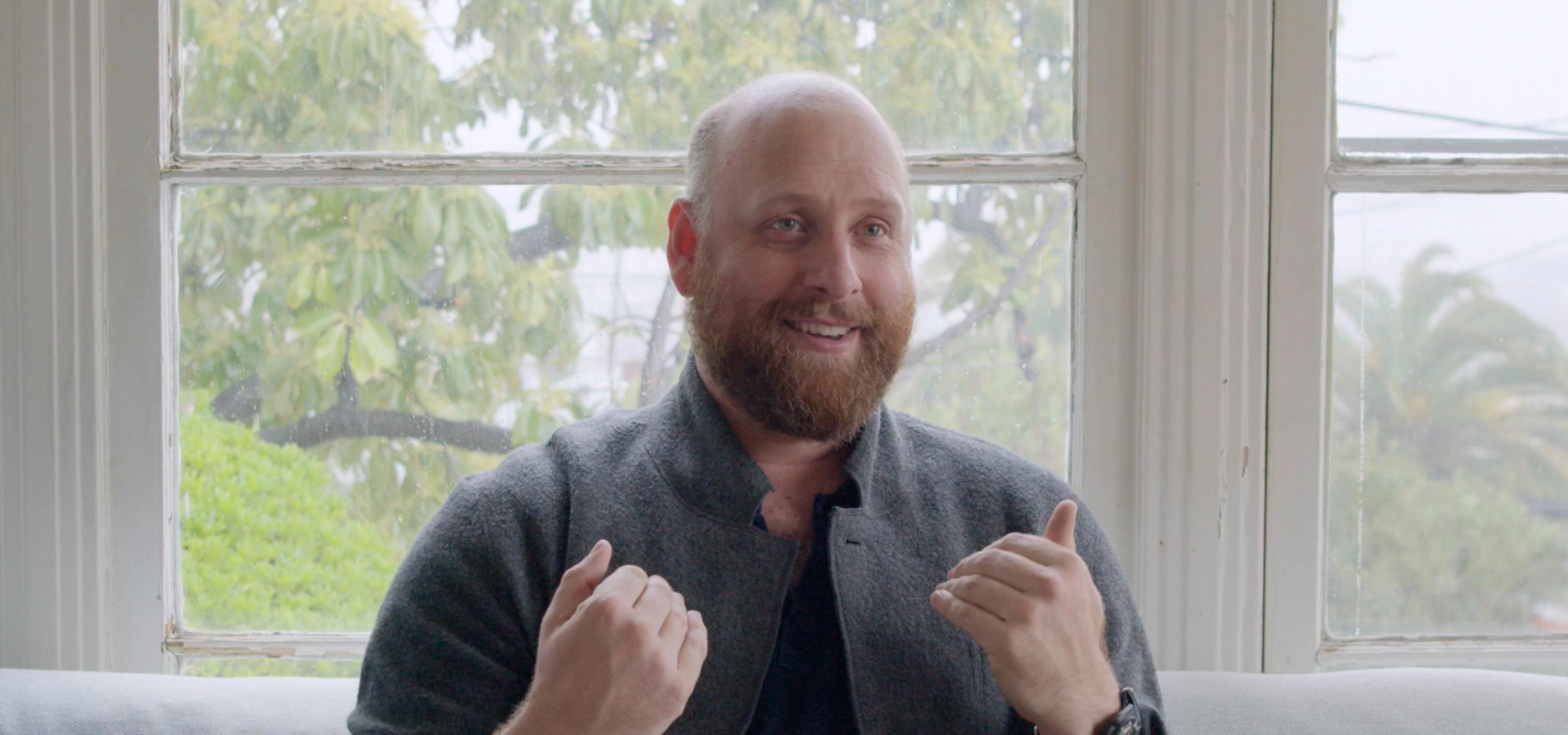
Julius Eastman’s Femenine
“Femenine is the kind of piece that makes one contemplate the immensity of reality.”
Wild Up Artistic Director Christopher Rountree, filmed by Anna Tse. Video editing by Tiffany Valvo, Cal Performances’ Social Media and Digital Content Specialist. Music bed: Wild Up, Julius Eastman Vol. 1: Femenine, New Amsterdam Records (2021).
Chris Rountree, artistic director of Wild Up, discusses the life and music of Julius Eastman, the late composer whose amalgamated musical vision was repeatedly dismissed in its day, but is now being unearthed to critical acclaim. In March 2024, Rountree will conduct Wild Up in a performance of Eastman’s Femenine as part of Cal Performances’ Illuminations programming contemplating “Individual & Community.” To provide insight into the work, in this video, Rountree covers:
Transcript
Chris Rountree:
These pieces of Eastman’s have these elements: personal agency, discourse about systemic inequity, and about race, and gender, and sexuality. And also, when you just drop the needle on the record, they’re totally ecstatic. And that, in a combination, is mind-blowing.
When did Eastman write Femenine?
He was having all these discourses right after he got out of the Curtis School of Music. Got out of Curtis, he went to Buffalo, he was in academia, he was working with an all-White ensemble, which were mostly men, and he was writing pieces called Femenine, which is the word “feminine” with the word “men” pushed inside of it, and he was doing the piece in drag at the piano, the only Black man on stage. He was doing pieces called “Evil N-Word,” “Crazy N,” “Gay Gorilla,” and then—he said these words that I won’t say—he then said, “You must print the title, because people should walk past the marquee, and the marquee should challenge them. When they receive an invite to the concert, they should feel something—the history of our country, the tragedy of racism, the tragedy of slavery—they should feel those things.
What is the musical form of the work?
The form of Eastman’s Femenine is really remarkable. When he designed the piece, he says that there’s one player or a group of players that play a single melody, which he calls the prime. It’s 13 beats long, it only has two notes. This prime melody begins at minute three in the work. We’re all playing on stopwatches, and it goes for the next 75 minutes on repeat without stopping.
Eastman gives instructions like “falling backwards”; “increase”; sometimes specific octaves, sometimes just scrawled on the page “E-flat”; sometimes poetic and also specific timings like, “pianist will interrupt, must repeat.”
So, these poetic words all over the score, every few minutes; there’s another prompt that changes what happens on top of the prime melody very subtly. So, this is a form of music-making that he called the “organic music.” So you’re just feeling something that is really staying on one idea for a long time, and subtly, it just shifts angles over a long period. We also know from Eastman’s performances that he would take solos and improvise. So everyone’s improvising the whole time, except for the person playing the prime.
What happened at the first performance of the work?
The magic of this piece happened at the first performance when there’s an apocryphal tale. They were doing the premier in an art gallery. And we know the piece is going to be 80 minutes or so, we know there’s gonna be one melody repeated the whole time and lots of improvisations. But what the band apparently did not know is that Eastman was going to go into the other room, he had built a machine that played the sleigh bells, and he would plug the machine into the wall before the piece began, and then walk back and start the work.
So it is an 80-minute arc of this organic, changing, swirling music, all contained within 85 minutes or so of sleigh bells that persist the entire time. Which, when you’re inside of that sound, it is a shimmering, incredible kind of forest of sound. It’s like being rained on. It’s like it has this quality of being everywhere and all around you. So when Wild Up does the piece, all of us begin playing sleigh bells.
Who is this music for?
I think that the audience is absolutely everybody. People that want to sit in a space, a meditative space, and feel something overwhelming that is about both the natural world and the human condition and also systemic inequity, and also gender and sexuality. Femenine is the kind of piece that makes one contemplate the immensity of reality.
Related Posts
There are no related posts yet. Check back soon!
Understanding Bach’s The Art of Fugue

Understanding Bach’s The Art of Fugue
“A fugue explores the musical potential of a simple idea…”
Created by Tiffany Valvo, DMA, Cal Performances’ Social Media and Digital Content Specialist. Music bed: Filippo Gorini, J.S. Bach Contrapunctus 11 a 4 from The Art of Fugue, BWV 1080.
The Art of the Fugue was meant to demonstrate all the possibilities of contrapuntal writing (more in this in the video!), which had occupied Bach since his youth. Far more than a collection of exercises, it resembles an unfolding musical narrative. Ahead of Filippo Gorini’s performance of The Art of Fugue in January 2024, we are breaking down what makes this work so notable.
Tags
Related Posts
There are no related posts yet. Check back soon!
Behind the Scenes with Cal Performances’ Artistic Administrator
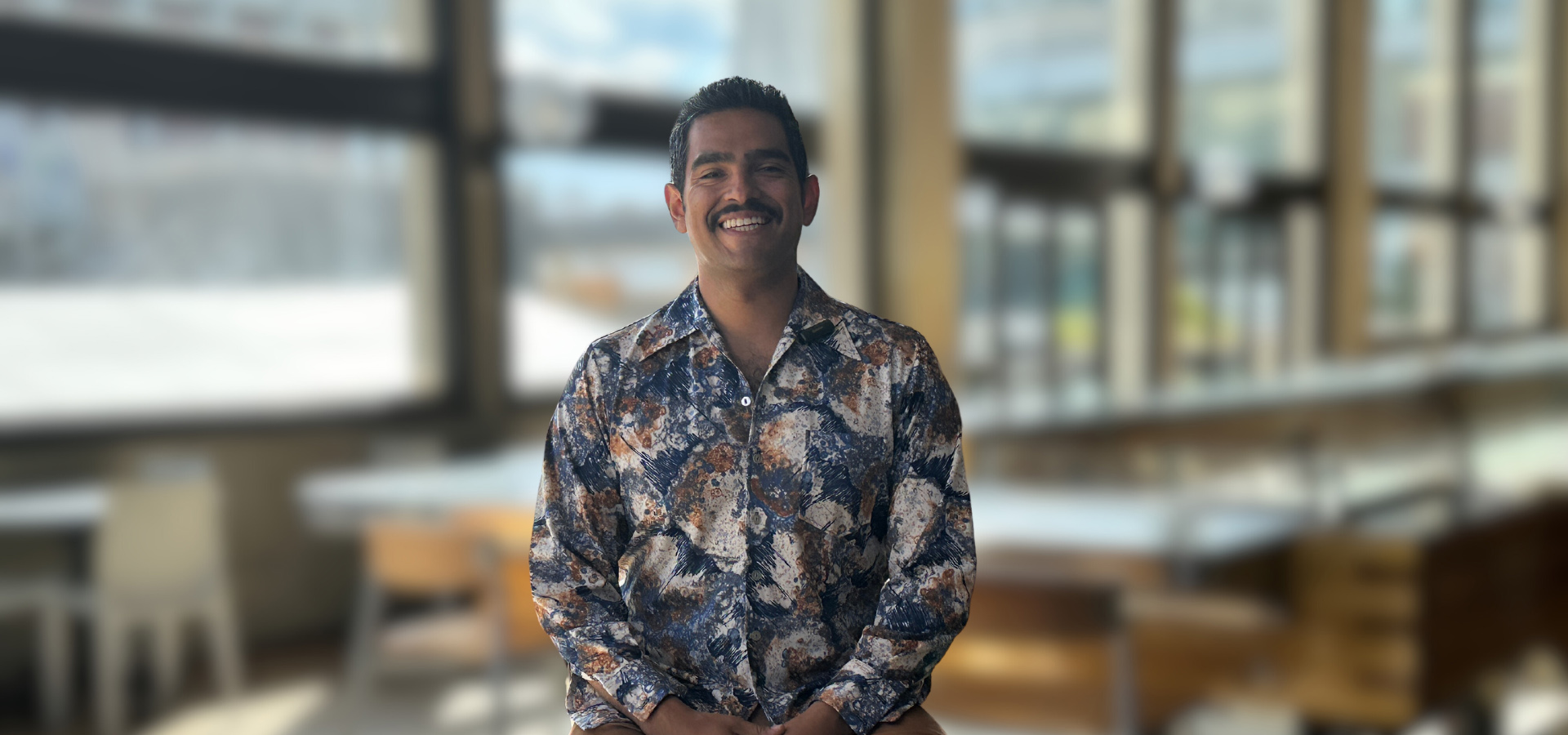
Behind the Scenes with Cal Performances’ Artistic Administrator
“I just love that we can support such a range and breadth of artists.”
Video by Tiffany Valvo, Cal Performances’ Social Media and Digital Content Specialist
Cal Performances’ Artistic Administrator, Devin Hinzo, is one of the key people who interfaces with artist and their agents, sometimes many seasons in advance, to get their work onto our stages! In this video, Devin answers:
- 0:07–Why do you love working at Cal Performances?
- 0:48–Do you have a background in the performing arts?
- 2:04–Did you have any experiences at Cal Performances before you joined the team?
- 3:04–What made you interested in arts administration?
- 4:02–What’s the most challenging part of your job?
- 4:36–What advice would you give anyone thinking about working in the performing arts?
Related Posts
What do the performing arts give to you?
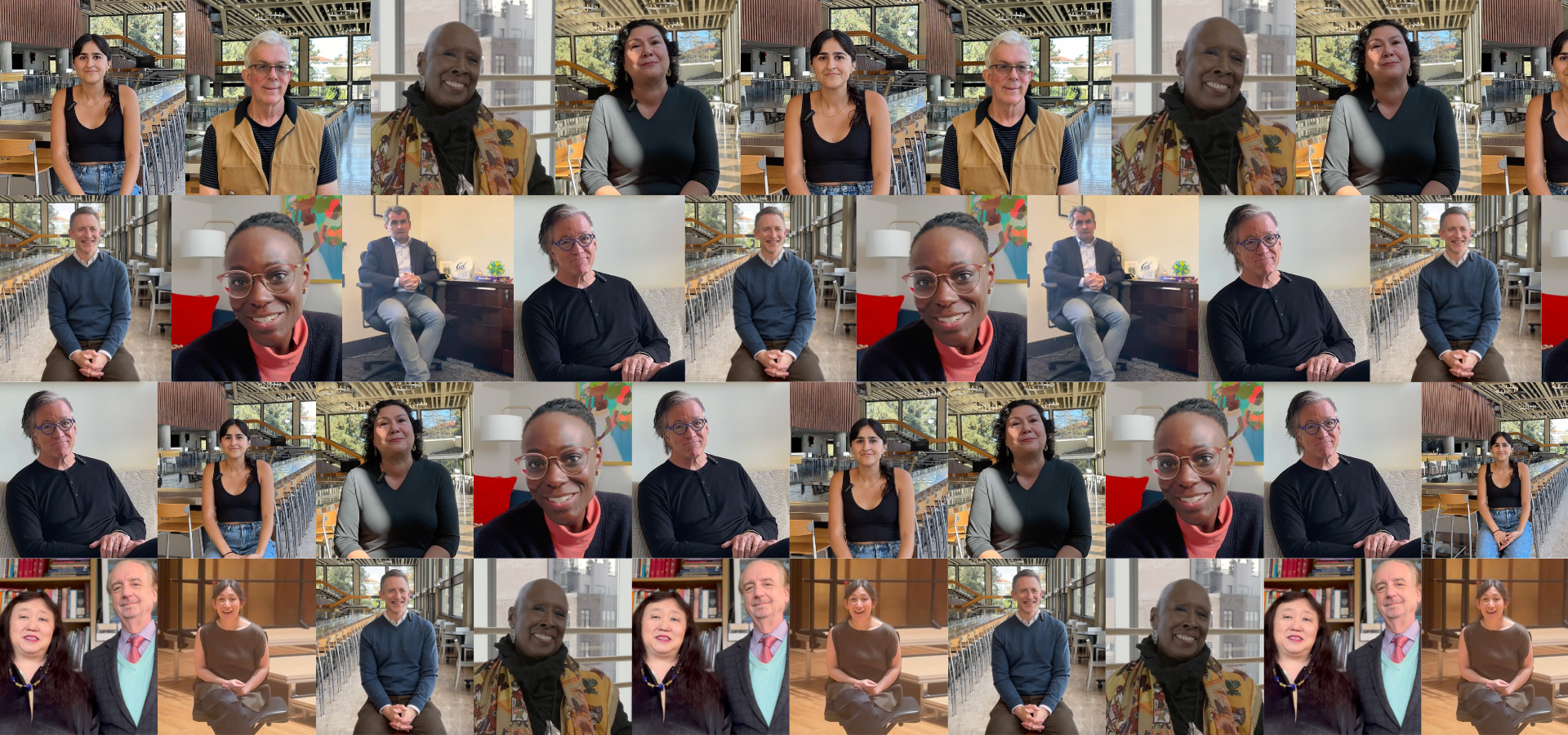
What do the performing arts give to you?
“I think there are as many answers to that as there are days of the year…”
Video by Tiffany Valvo, Cal Performances’ Social Media and Digital Content Specialist. Music bed by Brad Mehldau Trio.
As we enter into the season of giving, we wanted to take a look at those intangible gifts that the arts bring each of us—gifts that inspire us and shape us throughout our lives. Given that each person’s relationship with live performing arts is incredibly personal, we asked a number of artists, UC Berkeley students and staff, and patrons what the arts have given them. And, as we stitched together these wide-ranging answers, it became even more clear how essential the performing arts are to our lives: they help us understand the world, grapple with complex ideas, find joy when we least expect it, and so much more!
Watch the video to hear more about the performing arts’ impact on members of our community: Jeremy Geffen, Cal Performances Executive and Artistic Director; Kimia Adibi, UC Berkeley student and Cal Performances PR and Social Media Assistant; Nathalie Joachim, composer, performer, and flutist; Judith Jamison, choreographer and Alvin Ailey American Dance Theater Artistic Director Emerita; Tom Craft, Cal Performances Audio Department Head; Jeff MacKie-Mason, Cal Performances Board of Trustees Co-Chair and University Librarian, Chief Digital Scholarship Officer, and Professor at UC Berkeley; David Finckel, cellist and Co-Artistic Director of Chamber Music Society of Lincoln Center and Music@Menlo; Rica Anderson, Cal Performances Manager of Education & Community Programs; Oliver O’Reilly, Distinguished Professor of Mechanical Engineering and Vice Provost for Undergraduate Education at UC Berkeley; Wu Han, pianist and Co-Artistic Director of Chamber Music Society of Lincoln Center and Music@Menlo; and Harumi Rhodes, violinist for Takács Quartet.
Upcoming Related Events
Related Posts
There are no related posts yet. Check back soon!


